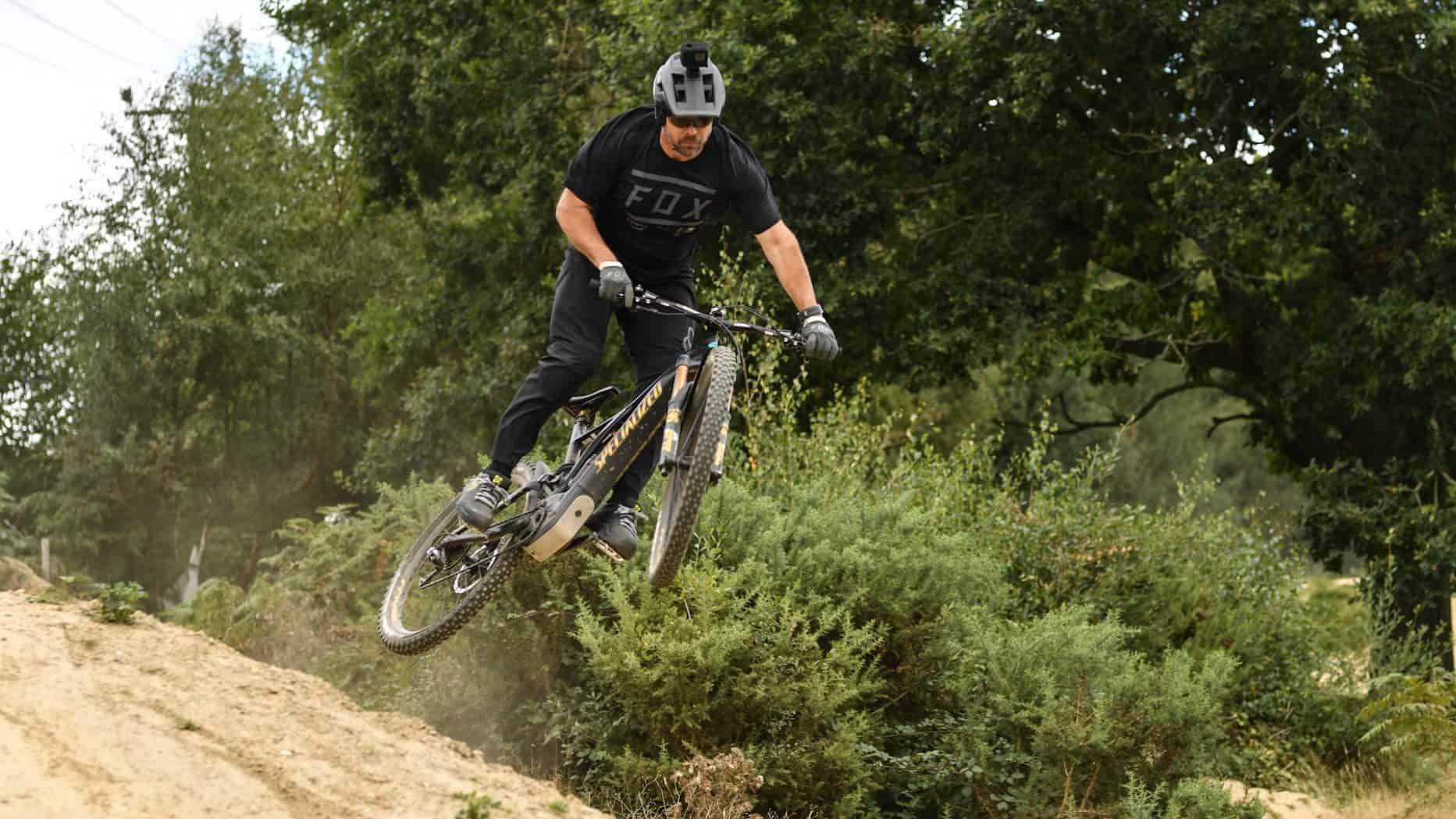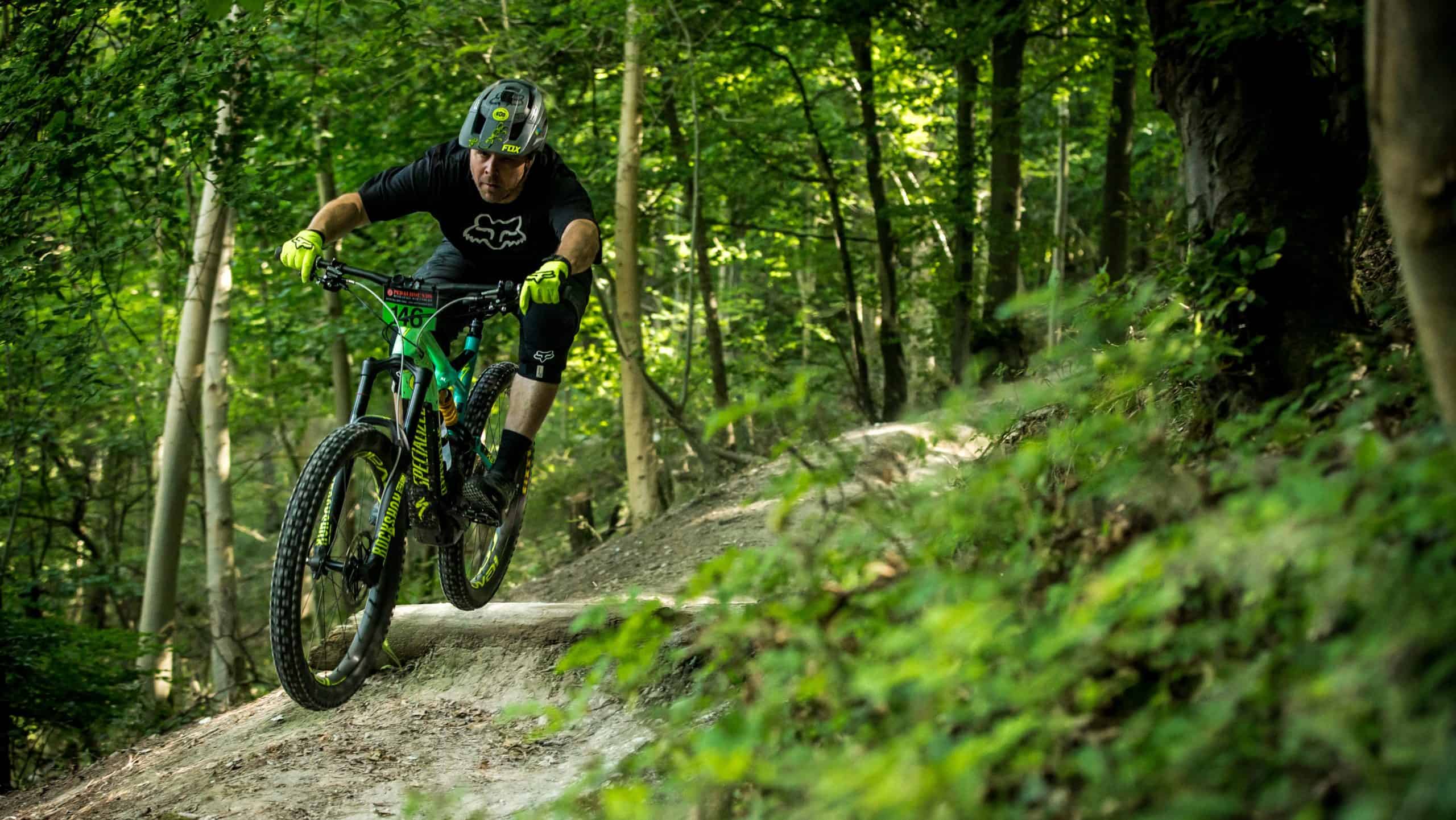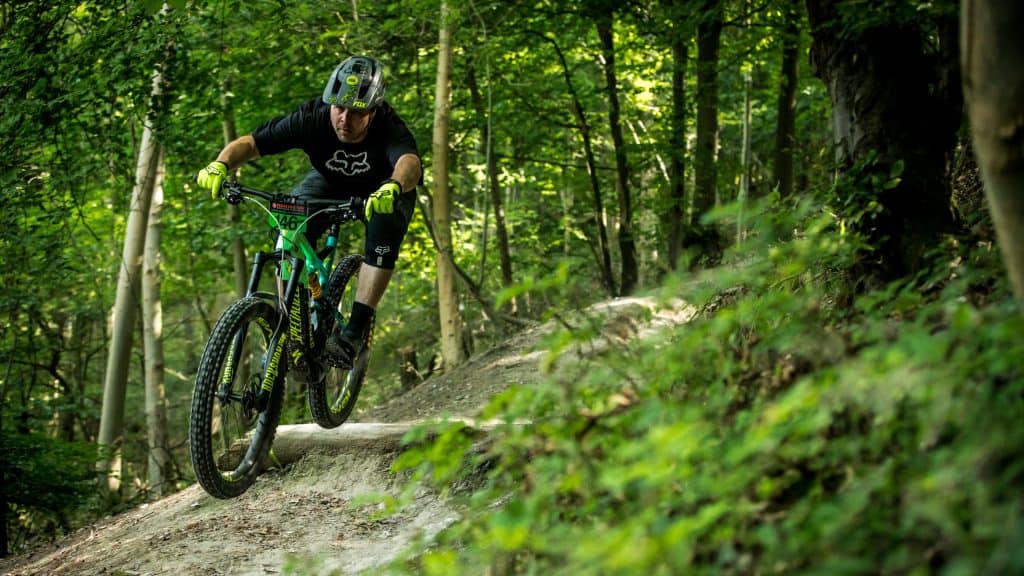Table of Contents
Fundamentally as a community, we are united by the fact that we have a passion for riding a frame on two wheels.
However, within this community, are massively different configurated frames on wheels for massively varying riding styles and niches. Road vs Touring vs BMX vs Mountain Bikes, the list goes on.
Mountain Bike or BMX?
In this article, I will outline the main differences between two hugely popular niches within the cycling community, specifically BMX vs Mountain bikes. While the presumption may be that yes, one is essentially for speed and doing jumps with, and yes, one is essentially for riding rough terrain, there are some key differences in the way these bikes are made up to suit their purpose.
Bike Frame
BMX Bike:
Because bikes are purpose-built, most design features are purpose driven. The purpose of BMX bikes is to ride either with speed around manmade tracks, or in urban areas (street BMX); often performing big jumps and manoeuvres through the transitions. Because of this, these frames need to be rigid enough to take the abuses and impacts of riding, yet compact and lightweight enough to perform these jumps and at speed. These bikes are often similarly sized, compact frames with only the essential components.

Mountain Bike:
Mountain bikes are purpose built to endure rugged & rough terrains for extended periods of time.
Because of this, their frames are usually more flexible in conjunction with bigger wheels and absorbent suspension which is more geared towards the size of the rider and creating maximum comfort and manoeuvrability.
These attributes absorb as much vibration while riding as possible, as MTB riders are often navigating rugged and rough terrain.
Finally, it is not uncommon to find mountain bikes with attachments for lights, water bottles, tyre pumps & puncture kits, something you don’t see in BMX bikes

Suspension
BMX Bike:
Unlike many modern bikes, BMX’s actually have no suspension at all. This serves many purposes: Firstly, when riding BMX the idea is to gain as much speed and power as possible, transferring this straight to the wheels, instead of being absorbed and losing kinetic energy through the suspension.
Secondly, in order to save on weight, and keep the frame light enough for jumps, it is assumed that these bikes will be ridden on more even manmade surfaces, and thus a suspension setup is unnecessary.
Mountain Bike:
Because of the rough, unpredictable and sometimes even treacherous conditions found when riding down a mountain, or a bike park track with jumps, a full suspension setup, capable of high-speed shock absorption, is a necessity.
In turn, this allows for a vastly more comfortable ride, and less jarring when compared to the BMX platform, and is a huge part of why MTB riders can perform for so long given the terrain.
Gears
BMX Bike:
BMX bikes are always single speed, or in other words equipped with only one gear.
This gear and matching sprocket size obviously are very much dependent on factors like the frame size, riders’ power and what terrain/course it will be ridden on, however always invariably have one gear.
This caters to the fact that BMX is usually more about pumping and manoeuvring tight and short fast sections around a track, rather than long stretched out sections.
It is extremely uncommon to find a long stretch that will strain the single gear of a BMX bike, as the gearing is so low as to give the best possible accelerating power.
Mountain Bike:
In stark contrast to BMX’s one gear, mountain bikes often have anywhere from 12 to 20+ gears.
The reasoning behind so many gears is that because the terrain is so varying and unpredictable, there will always be a gear to suit the situation.
Similar to the logic behind gearing ratios used in cars, the lower gears are often used for the best possible power and traction when doing steep uphill climbs.
Higher gears can be used for cruising or descending to accommodate the least resistance from the gears and greatest speed. Additionally, the incline severity as well as the rider’s energy can influence what gear is best to use.
Tires
BMX Bike:
A common theme affecting the components of these bikes as we have been alluding to, is of course the terrain. This is no different for the tire and wheel size.
The most common and standard tire size for BMX is usually somewhere roughly between 20 inches and 24 inches. Again, this completely depends on the context and terrain the bike will be used within.
These wheels are typically reinforced and strengthened to avoid the calamity of a tyre popping at speed or landing from a jump as well as to absorb impact and shock, which can obviously be very dangerous.
Despite being the smaller rim size catering to the typical compact frame, the smaller wheels function better on smooth surfaces, and can allow for a competitive edge in terms of gaining speed and accelerating when competing and pumping through transition etc.
Mountain Bike:
Again, mountain bikes are designed to power through rocky, debris-filled terrain, and adapt and ride accordingly while still providing the rider with the best possible amount of comfort and stability for riding.
In turn, these bikes are usually found sitting high and dry on anywhere from 26 inch to 29-inch wheels depending on the size of the rider, the latter being the most frequently used size.
This is for the simple reason that unlike the manicured, perfectly compacted smooth gravel tracks usually used for BMX, mountain trails are often covered in anything from twigs to branches, stones to rocks, and grooves to full on ditches. Because of this unpredictable terrain, bigger wheels are needed in order to reduce the drastic risk of a wheel being clipped skew, or even full on halt the bike (and launching the rider) when riding.
Also, in terms of tread the tires are usually large and feature large and contouring grooves and bumps in order to best grip and adhere to the sometimes slippery and leafy trail.
How The Ride Feels:
BMX Bike:
As we’ve mentioned, BMX are fundamentally designed and built for abuse, speed and the ability to pull off impressive, high-octane tricks and airborne maneuvers.
As previously discussed, this is the reason BMX bikes have no suspension setup, are comprised of compact and rigid frames, and make use of smaller lightweight wheels.
While these factors are absolutely crucial to the purpose they serve, the trade off is unfortunately end ride comfortability and quality. Because these high-performance bikes are only designed to be ridden intensely for a short period of time, comfort and plushness is not a factor.
In addition, the frame, small wheels and most importantly, the lack of suspension means that most of the impact involved with these big jumps and tricks is absorbed directly by the riders’ body, which can eventually take a toll.
Mountain Bike:
Mountain bikes on the other hand, are purpose built for comfort, vibration absorption and terrain adaptability.
Full suspension setups can go up to 10 inches, and coupled with the larger wheels and flexible frame, this provides a buttery ride quality and maximum comfort.
These factors are essential because MTB trails are often long and intense, thus the least impact on the riders’ body and allowing them to focus on maneuvering through the terrain.

Summary
With all the pros and cons, as well as the key structural and functional differences between BMX vs Mountain bikes being clearly outlined, it is essentially up to you which bike and sport appeals to you best.
Want a rigid, lightweight platform to perform high-intensity rides, tricks and airs on tracks? Go for a BMX.
Want a comfortable, sleek and smooth bike geared towards long mountain rides and rugged terrain, go for a MTB.
Whatever the case, both sports will have the adrenaline coursing through your veins and your heart pumping. While this may be the case, if you are new to the sport a Mountain Bike may be a better platform to learn the ropes of riding, before full sending it off ramps 6 ft in the air!

I’m James Duff, a 29-year-old from Orange, California, fueled by a lifelong passion for bikes. From childhood pedaling to exploring BMX tricks and tackling mountain trails, biking has been my constant. Now, I’m translating that love into words on this blog. Join me in discovering the thrilling world of biking, as I share insights, gear essentials, and personal adventures. Let’s journey together through the exhilarating realm of cycling.
